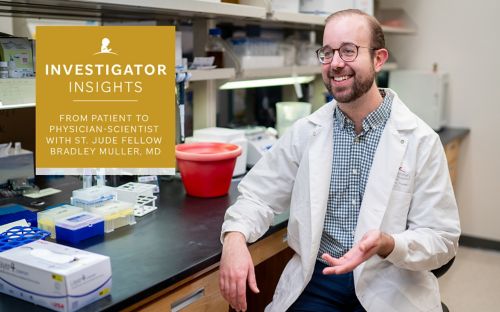Lennie Lott: Opening Doors, Saving Lives
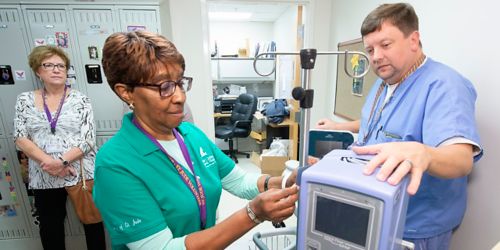
This photo was taken prior to the coronavirus pandemic. As an African American clinician and researcher in the 1960s, Lennie Lott broke barriers; her St. Jude service continues today.
As an African American clinician and researcher in the 1960s, Lennie Lott broke barriers; her St. Jude service continues today
A closed door has never intimidated Lennie Lott. In her lifetime, she has encountered quite a few. But during her 40-plus years in nursing at St. Jude Children’s Research Hospital, she learned that to open a world of possibilities, she only needed the courage to knock.
As a high school student in the early 1960s, Lott had ideas of pursuing a career in education or nutrition. One of her teachers, observing Lott’s affinity for caring for the school’s underdogs, suggested she think about nursing.
“I was always trying to help somebody, so maybe that was it,” Lott says. “I was always drawn to the kids who were looked down on or not included. I tried to make their circle bigger.”
Lott, an African American living in the segregated South, had only one educational option available to her: the City of Memphis Hospital’s School of Nursing.
As Lott’s career in medicine began, so did St. Jude, a fledgling hospital dedicated to children with cancer and other deadly diseases. The nonprofit organization defied social norms of the time, promising care for children regardless of a family’s religion, financial status or race. What’s more, the hospital was integrated: The medical and research staff included African Americans as doctors, scientists and nurses.
By the time Lott graduated from nursing school in 1967, St. Jude had gained a reputation as a place where those with a passion for making a difference come to break new ground. Lott had found her match.
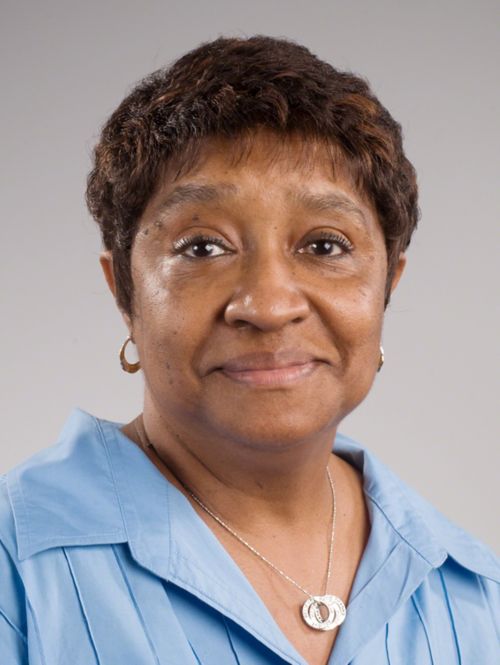
Lennie Lott, an African American clinician and researcher, has spent her entire career helping others and breaking down barriers.
Pioneer among pioneers
During that first year, she met hospital founder Danny Thomas. She also worked side by side with Donald Pinkel, MD, Joe Simone, MD, Walter Hughes, MD, Bettye Arnold, RN, and Clara Mason, RN, all legends of St. Jude and noted medical pioneers.
“I was like a kid,” Lott recalls. “I couldn’t wait to get up in the morning and go to work. The atmosphere, the energy, it was a beautiful experience.”
Outside the hospital, however, a reckoning on racial injustice was underway.
The tension found its way into the halls of St. Jude.
“One mother told (the nursing supervisor), ‘You can’t bring this Black nurse in here anymore. We don’t want her in here to take care of our child,’” Lott says.
The nursing supervisor explained to the family that Lott was the best of the best, and the family ultimately accepted Lott as the child’s nurse. But for Lott, it was a stunning reminder of the work that needed to be done.
By March 1968, Clayborn Temple, a large African American church minutes from St. Jude, was the hub for sanitation workers on strike for better wages and working conditions. The cause drew civil rights leader Martin Luther King Jr. to Memphis. When he was assassinated April 4 while standing on the balcony of the Lorraine Motel, his death rocked the city and country.
Tenacious role model
At St. Jude, leadership discussed what could be done to help heal the wounds of racial division. The conversation led them to open a clinic for underserved children, staffing it with volunteers. It was quickly evident that many of the clinic’s patients were severely malnourished.
St. Jude partnered with a local community organization called Memphis Area Project South (MAP-South), which provided food to families in desperate need. MAP-South set up a warehouse across the street from the Lorraine Motel and distributed surplus food from the U.S. Department of Agriculture.
“Prescription Food,” a documentary by WMC-TV, illustrates the hardships Lennie Lott and other St. Jude researchers were willing to take on for the sake of science and children’s health. Through her work with MAP-South, Lott enriched the lives of children and increased our scientific knowledge about the impact of malnutrition on young children.
Around this time, one of Lott’s first cancer patients died. The pain from the loss made her question whether she could make a career under such circumstances. She left St. Jude in 1969.
During her absence, the MAP-South program grew, and St. Jude researchers undertook a study to look at the severity of malnutrition. The results, published in a 1970 Journal of the American Medical Association article, were distressing. In Memphis, one-quarter of low-income children were anemic, one-third had parasitic infections, 50% showed signs of stunted growth and 15% were dramatically below the average height and weight for their age.
Lott, who had been treating adults at Methodist Hospital, missed working with children. When she returned in 1971, Donald Pinkel, MD, the first medical director of St. Jude, had an assignment for her.
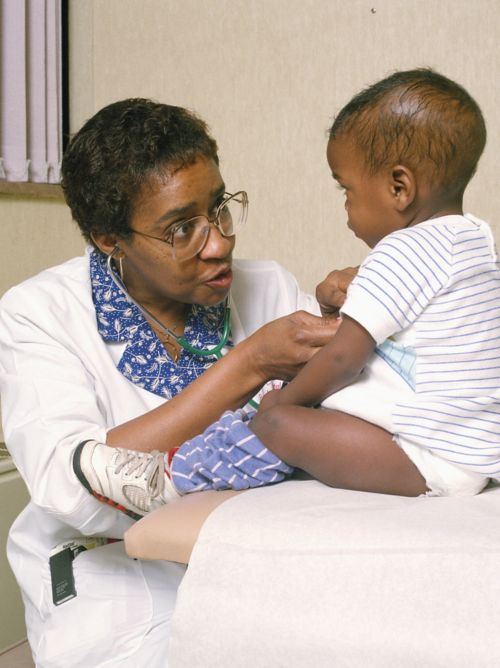
“Dr. Pinkel asked me if I wanted to be a role model, working as a pediatric nurse practitioner under the supervision of his clinical physicians. I told him, ‘No, sir, I don’t,’” she says with a laugh.
Lott agreed to take on a role connected to the St. Jude–MAP-South collaboration, handling South Memphis outreach.
She threw herself into the work—walking across neighborhoods, going from house to house, knocking on doors. After families were enrolled into the program, the participants were served meals and clinically evaluated at St. Jude. MAP-South also offered social services support.
“The needs were quite blatant. When we started, they would pick the children up and bring them to St. Jude so they would get a meal,” Lott remembers, “Sometimes, that was the only full, nutritious meal the child received that day.”
After a year of distributing food, organizers realized that the program was not effectively reaching the population most in need: children under age 2. St. Jude responded with a new initiative, enrolling thousands of babies in the poverty-stricken area in a “well baby care program.” The families were provided with specially enriched baby formula on a prescription basis.
Lott gained a reputation for tenacity.
“Lennie will not rest until she gets Similac (a baby formula) in every home,” Larry Baker, the former director of the St. Jude pharmacy, used to say.

The results of the effort were extraordinary. When properly fed, the poor infants grew at the same rate as middle-class children. Anemia plummeted to 8% in treated infants. The program showed that infant malnutrition could be eliminated at a cost of just 71 cents a day per child.
The achievement eventually spurred development of the federal Special Supplemental Nutrition Program for Women, Infants, and Children (WIC). Today, WIC meets the nutritional needs of 8.2 million people every month and is widely viewed as one of the most successful nutrition programs of all time.
A new door, a new day
Following MAP-South, Lott continued her nursing work, caring for hundreds of St. Jude patients. Then in 2001, national professional standards changed, requiring supplemental schooling for her position. Because of personal obligations, Lott was unable to pursue additional education. Instead, she opted to change direction, using her skills and experience to benefit children and adolescents with HIV.
“Whenever an avenue was cut off in my career, a new door opened for me,” Lott says. “The funny thing is that the HIV/AIDS program is not that much different than the MAP-South program.”
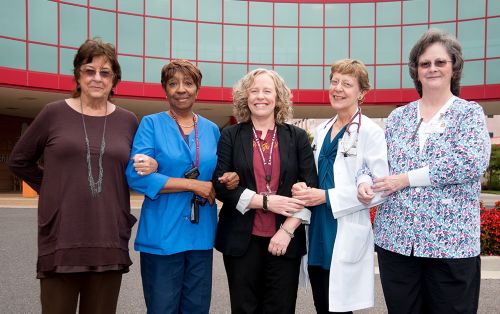
Both programs addressed needs in a similar population—mostly underserved African American young people—and both programs faced similar resistance early on from outside the hospital and among employees.
“There were quite a few people who did not want either of those programs to be part of St. Jude, but eventually we were embraced and accepted,” Lott recalls.
The St. Jude HIV/AIDS program started in 1987 when Danny Thomas declared AIDS a catastrophic disease of childhood and prioritized HIV/AIDS research. The program grew quickly to answer a dire need.
“Some of the caregivers, grandmothers, and the young mothers and young men, they were ostracized. That ignited me,” Lott says. “With the program, I grew again. And a lot was accomplished through the protocols, the medications and the research.”
Today, more than 250 patients are part of the St. Jude HIV/AIDS clinical program, which treats children from birth to age 21. It’s the only comprehensive care center for HIV treatment in children and youth in Memphis or the region. St. Jude research and treatment efforts have helped to dramatically lower HIV-infections in newborns.
Heart of service
Working as a clinical research associate for the HIV/AIDS program, Lott was awarded the highest honor St. Jude bestows upon employees in 2007. Colleagues cited her well-earned knowledge, encouraging words and heartfelt touch as an inspiring model for all. She was also honored by Celebrate Nursing 2007 as one of the region’s top nurses.
In 2015, Lott retired, but her absence was not felt long. She continues to support children and families through the Ladies of St. Jude, a volunteer group that hosts activities on campus as well as fundraising events.
Reflecting on her time with St. Jude, Lott says, “Without God’s grace over my life, I would have not known Dr. Pinkel. There would not have been a St. Jude, MAP-South or the HIV program. I am so thankful they were part of my journey.”
If every act of kindness generates a ripple, Lott has triggered a veritable tidal wave. Much is owed to her spirit of service and courage to open new doors, bridge treatment gaps for underserved populations and help St. Jude make a mark against malnutrition and HIV.
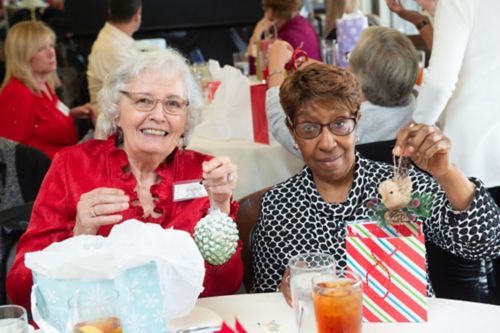
All photos were taken pre-pandemic.

